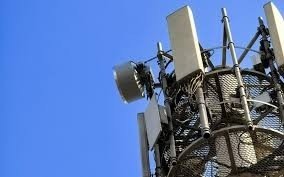Oman’s telecommunications industry has posted significant growth in 2024, driven by a surge in Internet of Things (IoT) subscriptions, expanded fiber broadband access, and increased investment from both the public and private sectors, according to official data released this week.
Mobile subscriptions rose to 7.5 million, reflecting a 7 percent year-on-year increase from 6.9 million in 2023. Fixed broadband subscriptions grew by 2 percent, reaching 573,000, up from 562,000 the previous year. The biggest growth was seen in the IoT segment, which jumped by 72 percent, reaching 1.1 million subscriptions in 2024, compared to 668,000 in 2023. Over the last five years, the country has added 908,000 IoT connections, highlighting the rising demand for machine-to-machine communication across sectors like utilities and logistics.
Telecom sector revenues grew to RO 920 million ($2.4 billion) in 2024, up from RO 881 million in 2023, marking a 4 percent increase. The sector’s investment intensity reached 28 percent of revenues, surpassing the global average of 15–20 percent, reflecting Oman’s commitment to long-term digital transformation and sustainability.
The government continued its efforts to digitize public services, with nearly 97 percent of government school buildings now connected to high-speed fixed broadband, up from 96 percent in 2023. The broadband rollout has seen exponential growth, from just 22 percent coverage in 2020 to near-universal connectivity today, driven by a mix of fiber-optic and 5G wireless technologies under Oman’s Vision 2040.
The country’s fixed broadband units grew by 14 percent, reaching 841,000, up from 737,000 in 2023. Fiber-optic links increased by 12 percent, totaling 5,856, compared to 5,238 last year. Residential fiber coverage expanded to 90 percent of housing units, from 85 percent in 2023. More than 5,600 telecom towers were upgraded from 3G to 4G/5G, and the Telecommunications Regulatory Authority (TRA) allocated new frequency bands at 2300 MHz and 2600 MHz to enhance data speeds and coverage.
The number of licensed telecom operators increased to 24, up from 22 in 2023, while firms authorized to provide telecom services surged by 63 percent to 399. This includes eight IoT service providers, 37 companies offering geolocation and tracking solutions, and two operators providing voice or video services over IP.
The postal sector also showed stable growth, registering 3.2 million domestic parcels and 437,000 international outbound shipments. The sector’s revenue reached RO 3.4 million, reflecting a 3 percent increase from 2023. Licensed postal firms increased to 74, with 80 percent of these being small and medium-sized enterprises (SMEs).
Oman’s telecom and postal sectors employed 3,400 nationals in 2024, with the telecom sector having a nationalization rate of 71 percent, and 93 percent in the postal sector. To further develop local talent, the TRA launched new training tracks in telecom engineering, programming, and AI/cloud computing.
Mobile data speeds in Oman also saw improvements, with mobile download speeds increasing from 61 Mbps to 73 Mbps, and fixed broadband speeds rising from 84 Mbps to 96 Mbps. The TRA introduced a central number portability system to make it easier for consumers to switch operators while retaining their phone numbers, alongside a new caller ID authentication feature to combat fraudulent calls.
Oman’s telecom sector continues to play a pivotal role in the country’s digital transformation. With higher-than-average investment intensity, growing participation from SMEs, and expansive broadband initiatives, the country is well-positioned to meet the digital goals set under Vision 2040. Policy measures to enhance AI integration, spectrum utilization, and service quality are expected in 2025.















